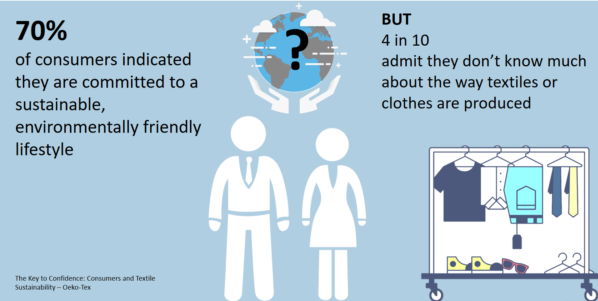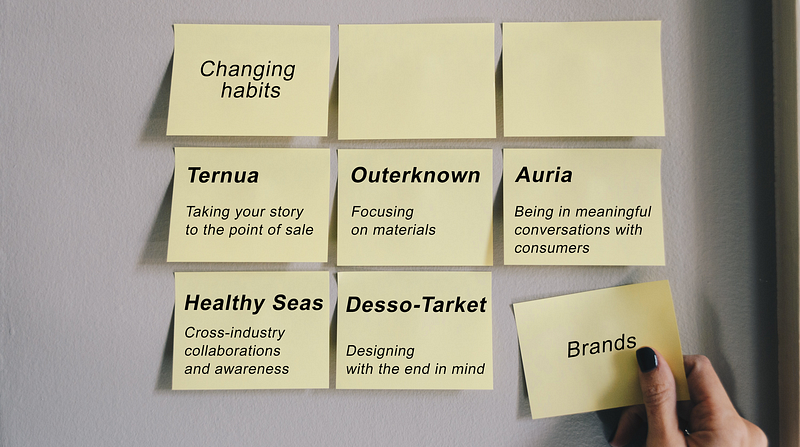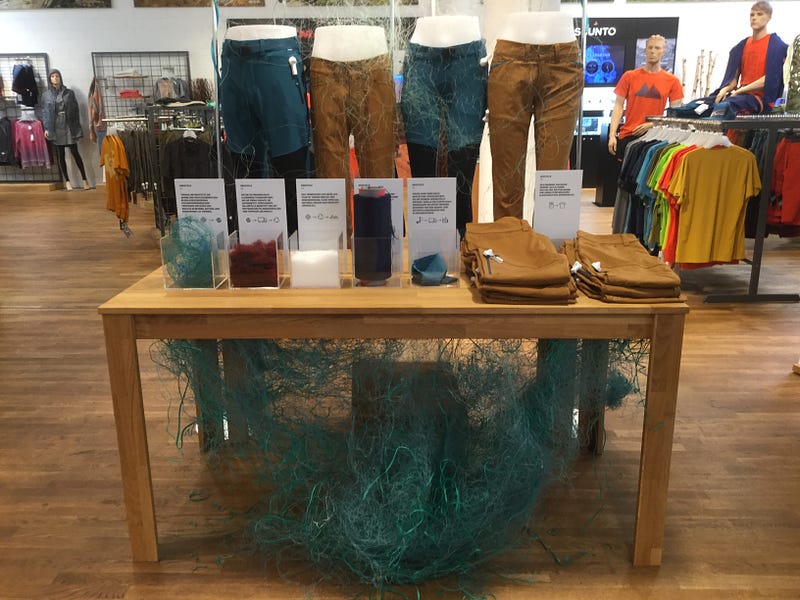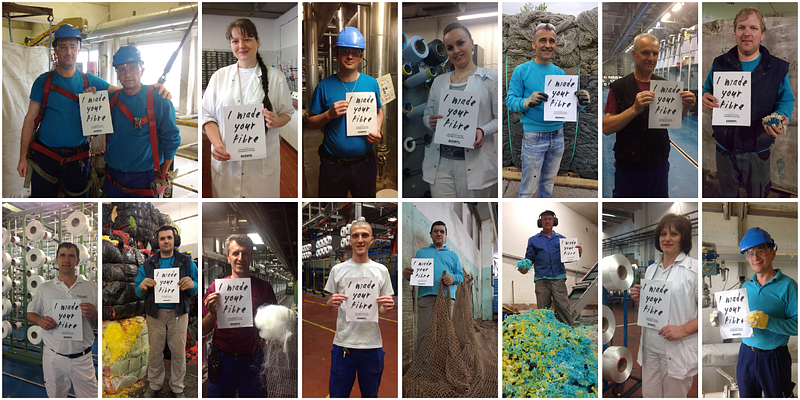The topic of habit changing and social behavior is a fascinating one and an essential area of study to keep an eye on if you are a company who invested time, money and management efforts in building a brand with sustainability at its heart. How can brands help change consumers habits when purchasing a product, using it and discarding it so that they can drive the industry towards sustainability and engage consumers to do the right thing for the greater good?
I wish I lived more sustainably
According to a recent study by Oeko-Tex®, 70% of respondents say they want to live sustainably, but this is mostly aspirational because a much smaller number of people do something at the moment of purchasing to make more sustainable choices. Only 39% tried to avoid brands or companies they felt were not friendly to the environment or to those making the product, and only 35% checked if the claims on the product label or packaging were true. And what do they check when they do it? 49% check the fiber content and 52% check certifications. These are what Oeko-Tex® calls the shortcut to trust. With little time to dedicate to researching the brand, consumers are often checking certifications and trusting those or the brand name.


The gap between many people saying that they would like to live a more sustainable life and those who do something to make it real is called “cognitive dissonance.” It’s the distance between what we think we would do and what we actually do. We believe there are a lot of initiatives that brands can undertake to overcome cognitive dissonance and engage consumers in their sustainability efforts. Let’s review some ideas that we saw from our partners who are using our ECONYL® regenerated yarn.

The mentoring power of brands
Ternua — Taking your story to the point of sale
We found particularly nice the idea of our Spanish customer Ternua who brought the story of its product to the point of sale. In an interesting interview about global warming and behavioral change, Professor Dan Ariely, an expert on Behavioral Economics at Duke University, explained that we cannot make people think about global warming all the time, but it’s crucial that we focus their attention on the problem at the moment when their purchasing choices can make a difference. So, what’s better than displaying your sustainability story right near the product and in a simple way so that people can see and understand the difference your product can make on the environment?ù

Directly under their trekking trousers, Ternua displayed some plexiglass cubes with the waste material that is used to make ECONYL® nylon, the ingredient they use. Thus, by telling the story behind their products visually and concretely, they were giving explicit information about how much oil is saved by using waste as a raw material, and the benefits for our seas. This is because ECONYL® yarn is made using abandoned fishing nets that are recovered from the seas as well as other nylon waste. Moreover, Ternua developed the REDCYCLE project (“red” in Spanish means net) together with fishing communities in the northern part of Spain to recover spent fishing nets from harbors. In 2016, they gave us 12 tons of fishing nets to regenerate into ECONYL® yarn. The idea to have this story precisely at the point of sale when consumers are choosing among products is a great way to underline the competitive advantage of their product in the right spot and moment.
Outerknown — focusing on materials
As we mentioned above, one of the findings in the Oeko-Tex® study was that after certifications, the ingredient was the second most important thing consumers were checking when purchasing a product and trying to make more sustainable choices. For this reason, we particularly liked how Outerknown focused on the importance of materials and ingredients as a key element to tell their sustainability story. Before starting our collaboration, Outerknown came by our facilities to check all the steps of the production and to see the waste material that we were using in the regeneration process. At the time of the launch, part of that journey they did by our facilities became one of the videos they were using to tell the story behind their jackets and trunks.
From another interesting study by Accenture, it appeared that consumers are frustrated by their inability to quickly identify more responsible brands and incorporate them in their purchasing decisions. They feel the need to understand in a simple way the impact that their purchase has. Also, many communications around sustainability are failing to get to people because of the threats they contain and the catastrophe narratives they use related to climate change. This story of risks beyond control mixed with little information on what can be done about it is building a self-denial attitude and apathy among consumers.
We believe this video and all the communication by Outerknown around their efforts to build a more sustainable supply chain is clearly going the other way, offering simple and clear messaging that focuses on materials and a positive narrative that is centered on solutions rather than problems.
Auria — being in meaningful conversations with consumers
This is an excellent example of how important it is for brands to be present where and when conversations are taking place around the sustainability of their products. One significant initiative of this kind it the Fashion Revolutionweek when consumers are invited to ask brands #WhoMadeMyClothes. This initiative started focusing mostly on social working conditions of people producing garments but also expanded to include the topic of sustainability from an environmental standpoint.

As ECONYL®, we participated in the Fashion Revolution week by sharing pictures of our workers taking care of waste materials and working at various stages of the regeneration process. Sienna Somers, a model and conservationist was looking for information about her new Auria swimsuit and found our pictures on social media. She was very happy to discover the story behind the swimwear and how Auria was creating it using a yarn that was using waste as a raw material instead of oil.
This story is the perfect example of how important is to be in these conversations ready to give the requested information to consumers who are eager to know more about sustainable practices and a way to improve the industry.
The Healthy Seas initiative — cross-industry collaborations and awareness
Almost all studies about behavioral change explain that when we are in a situation and not sure how to act, we are going to look to other people and to the norms applied in that situation. Social norms have a powerful influence on our behaviors, and that is why it is so important to work on awareness to create best practices of collaboration that can be applied to other sectors and can expand the knowledge around a topic or an issue.
As an example of the importance of this, we would like to mention the Healthy Seas initiative, a partnership between businesses (among them Aquafil) and an NGO. The Healthy Seas initiative was born to recover waste from the seas and oceans and to create awareness on the problem of marine litter. Today, after five years from its creation, Healthy Seas has collected 375 tons of fishing nets — equal to the weight of two blue whales — and has collaborations with harbors and fishing communities both to create collection points for spent fishing nets and to generate awareness on the problem of marine litter. Commissioner for Maritime Affairs and Fisheries, Mr. Karmenu Vella, agreed last year to become an official Healthy Seas ambassador and record a video statement where he underlines his active support for the work the initiative is doing. The European Commission considers marine litter a severe problem and therefore sees action leading toward a circular economy as the way forward.
But Mr. Karmenu Vella was not the only one supporting the project. Since its founding, the initiative has grown to nearly 50 partners who support the project at different levels and from different industries. Among them are more than 20 brands of the fashion and home textiles industry who support the initiative because they like what Healthy Seas is doing for the environment and want to share this story and the importance of it with their customers. All of these brands, in fact, are sharing the story of Healthy Seas and how part of the garments or home textiles they manufacture are also made with those recovered nets turned into regenerated ECONYL® yarn and new products. Healthy Seas is very active not only into diving activities with a fantastic diving community of volunteer divers but is also very active in awareness campaigns with schools of any kind, from education activities with the little ones to fashion schools.
Desso-Tarket — designing with the end in mind
This is a slightly different case study we are sharing here as a last example. It is less connected to consumers behavior in the first place but will be more and more critical in the future. Desso is a Dutch carpet manufacturer who decided to re-engineer carpet tiles to make them more easily recyclable at the end of their life. It’s called engineering for remanufacturing or for disassembly, and we like this concept because our ECONYL® yarn is regenerated and infinitely regenerable, so we are always looking to collaborate with brands willing to re-engineer their products in a way that makes the recovery of the fiber easier and more sustainable and keeps materials in the production cycle. The name of the collection is Desso Air Master® with recycled EcoBase® backing, and all products in this range are certified Cradle to Cradle® Silver. The upper part is ECONYL® yarn while the EcoBase® backing, which is 100% recyclable, contains recycled, re-engineered calcium carbonate (chalk) from local drinking water companies. The two parts are designed in a way that makes very easy to separate them for recycling.

This might look like a design project far from consumers lives, but in the end, if the circular economy will eventually be the norm in all industries, and consumers will become suppliers to closed-loop systems and active agents in recovering resources, so we believe this will be the next step of their involvement.
Impacts
As said at the beginning, changing habits and getting to the hearts and mind of consumers with sustainable products is a complicated task, but these brands and many others are working on this challenge and offer interesting ideas and ways to engage consumers and drive innovation for the greater good. The Oeko-Tex® study on consumers demonstrates that once people are aware of the problems and the impacts of their choices, they are willing to change behaviors and are more careful in choosing products and checking the credential of brands. The effect can be massive and can help change the way we consume products to impact less on our environment and create better conditions for those working in the supply chains.
But as we are hoping for more profound changes, we cannot be blind to the progress already taking place in many industries, and we should celebrate those and learn from what is already happening. According to recent studies, Millennials are already shifting habits and asking for fewer goods of better quality and with better environmental and social credentials. They are “looking for meaning in the way they spend their money” and “by touching brands with their wallets, the consumer identifies with the values for which each brand fervently stands.” If this approach will grow and take over, sustainable brands will have great opportunities to lead the change that many industries need to make. Consumers are already looking for information and solutions and are looking to enter conversations and be active. Sustainable brands can and will have to respond to these needs in creative ways and with positive and clear messages and actions to create conversations and actively engage consumers.
“Never doubt that a small, committed group of citizens can change the world; indeed, it’s the only thing that ever has.”
Margaret Mead
